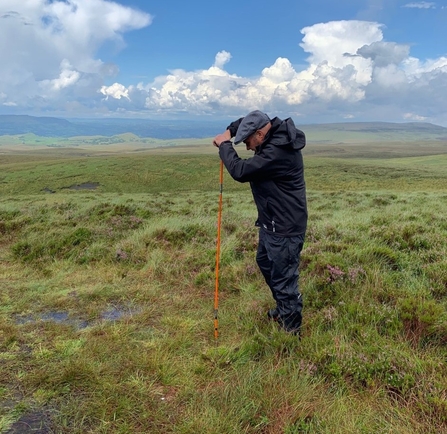Importance of our precious peatlands
There are around 242,600 hectares of peatland in Northern Ireland covering 18% of the land area – that’s around 21 times the area of Belfast City. They have a critical role in our efforts to reduce greenhouse gas emissions to the atmosphere, are part of our agricultural landscape, and are unique places, rich in nature, hosting many rare and protected species
Healthy peatlands have formed over thousands of years and are naturally wet places. For generations they have provided land for livestock farming, feeding us and supporting our economy. In the uplands, they capture rainfall, controlling its steady flow downhill, averting flooding, and supplying clean water into rivers and into drinking water reservoirs, and can reduce the risk of wildfires during prolonged dry weather.
Peatland plants, such as sphagnum mosses, draw carbon dioxide from the atmosphere using it for growth, and as the older parts of the plants die back they slowly turn into carbon-rich peat, millimetre by millimetre, locking away the carbon for thousands of years. It’s a massive amount of carbon – in Northern Ireland there are around 45 years’-worth of our current annual greenhouse gas emissions locked away as peat.
This critical role as a natural regulator of our climate is under threat as our use of these lands over many generations has altered their ability to keep the carbon stores in the ground, and modern air pollution has upset the balance of plant life and its ability to become peat. This needs to change. We have to give peat a chance, for it to help us in return.
In Northern Ireland, there are around 45 years’-worth of our current annual greenhouse gas emissions locked away as peat.
Protecting our peatlands: the time is now
In 2021 with the critical decision-making CoP26, the UN Climate Change Conference of the Parties, in Glasgow this November, we need to gear up and transform our efforts to tackle climate change for the long term. Taking urgent action to protect peatlands is being recognised by governments, landowners, environmentalists and citizens.
Globally, peatlands cover just 3% of the land area yet they store twice as much carbon as the forests and it’s critical this stays locked away. The challenge is that in Northern Ireland around 80% of our peatlands are leaking greenhouse gases and urgent action is needed to restore them so we can stop this; and it needs to be done on a big scale, done as quickly as possible.


